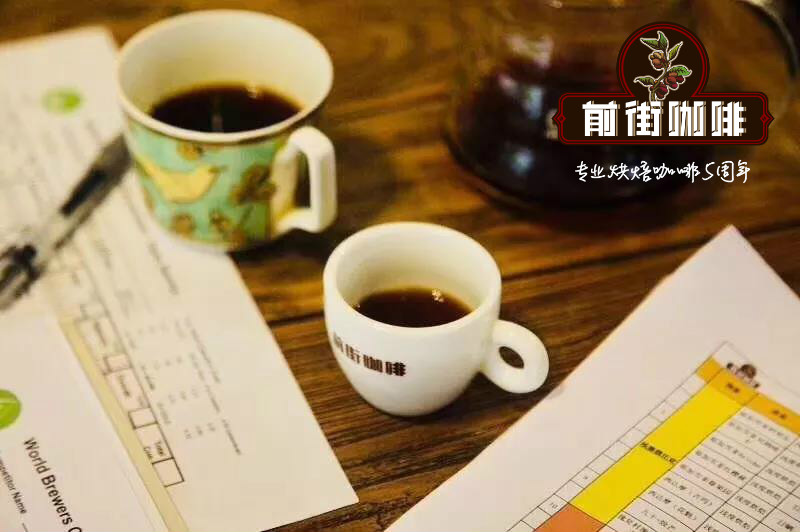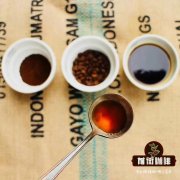Characteristics of manor treatment in Ecuadorian coffee producing area at the altitude of coffee planting in Ecuador

Professional coffee knowledge exchange more coffee bean information please follow the coffee workshop (Wechat official account cafe_style)
Coffee cultivation in Ecuador covers an area of 305.000 hectares, of which Arabigo coffee accounts for 68 per cent and Robusta coffee accounts for 32 per cent. Coffee, cocoa and banana are the three traditional crops of Ecuador, which are not only the source of farmers' income, foreign exchange for the country, but also important crops to provide employment and social stability. Due to the collapse of international coffee prices around 2000, coffee cultivation in Eritrea has gradually shrunk, and the share of coffee production in the world has also gradually declined. by 2009, Eritrea's coffee production accounted for only 1% of the world's coffee production. However, the export volume of coffee from Eritrea has gradually increased, mainly due to the developed instant coffee processing industry in Eritrea, which, in addition to home-grown coffee, still imports foreign coffee after processing and re-export.
The planting area of coffee gardens in Ecuador is generally small, with about 80% of coffee farmers planting less than 5 hectares, 13 per cent between 5 and 10 hectares, and only 7 per cent of more than 10 hectares. According to statistics, 20% of the land in coffee plantations is illegally occupied out of an area of about 300000 hectares in the country. According to the Coffee Association of Eritrea, Ecuador's most important coffee producer is in MANABI province. The sale of coffee in Ecuador is very special, mainly from domestic buyers to small farmers to negotiate purchases. These middlemen take great pains to rush from village to village to visit farmers one by one and negotiate prices. After negotiation, the coffee is transported to a small number of coffee factories for processing, and then transferred to foreign distributors or processors. Ecuador coffee processing industry is mainly located in Huiyueji, Quito and Manda, and only a few towns have traditional small manual processors.
The Golden Cup Competition (Taza Dorada) is hosted annually by the Ecuadorian Coffee Export Association (ANECAFE). It is a bit like Ecuador's annual COE Cup Competition, but when you sell raw beans, you still have to find buyers separately, without an online international bidding system. Coffee farmers in southern Ecuador own an average of 1.5 hectares of small farms per person, mostly organic farms, and produce a wide variety of products including flowers, corn, kale, bananas, bees, cattle, fish, fruits and coffee. In Ecuador, there is a lack of plant nutrients, which also affects the quality of coffee and the growth of coffee inner shell and raw beans. The area is gloomy and very humid, coupled with warm summers, the conditions are very suitable for growing coffee.
Important Notice :
前街咖啡 FrontStreet Coffee has moved to new addredd:
FrontStreet Coffee Address: 315,Donghua East Road,GuangZhou
Tel:020 38364473
- Prev

Is the coffee delicious in Sumatra, Indonesia? What are the characteristics of Manning?
Professional coffee knowledge exchange more coffee bean information please follow the coffee workshop (Wechat official account cafe_style) Manning jumping micro-acid mixed with the richest aroma, let you easily taste to the lively factor in the mild fragrance, its extraordinary taste captivated many suitors. In the 17th century, the Dutch introduced Arabica saplings to Ceylon (present-day Sri Lanka)
- Next

Yemeni Coffee planting conditions Yemeni terraced Coffee causes growth Origin Distribution treatment
Professional coffee knowledge exchange more coffee bean information Please follow the coffee workshop (Wechat official account cafe_style) Yemenmoka has always been my favorite, few coffee can have wild, game, wine, fig flavor, but also contains mild, changeable, and strong chocolate flavor. Yemenmoka, once praised as an Arab wine, is just like Allah.
Related
- Does Rose Summer choose Blue, Green or Red? Detailed explanation of Rose Summer Coffee plots and Classification in Panamanian Jade Manor
- What is the difference between the origin, producing area, processing plant, cooperative and manor of coffee beans?
- How fine does the espresso powder fit? how to grind the espresso?
- Sca coffee roasting degree color card coffee roasting degree 8 roasting color values what do you mean?
- The practice of lattes: how to make lattes at home
- Introduction to Indonesian Fine Coffee beans-- Java Coffee producing area of Indonesian Arabica Coffee
- How much will the flavor of light and medium roasted rose summer be expressed? What baking level is rose summer suitable for?
- Introduction to the characteristics of washing, sun-drying or wet-planing coffee commonly used in Mantenin, Indonesia
- Price characteristics of Arabica Coffee Bean Starbucks introduction to Manning Coffee Bean Taste producing area Variety Manor
- What is the authentic Yega flavor? What are the flavor characteristics of the really excellent Yejasuffi coffee beans?

